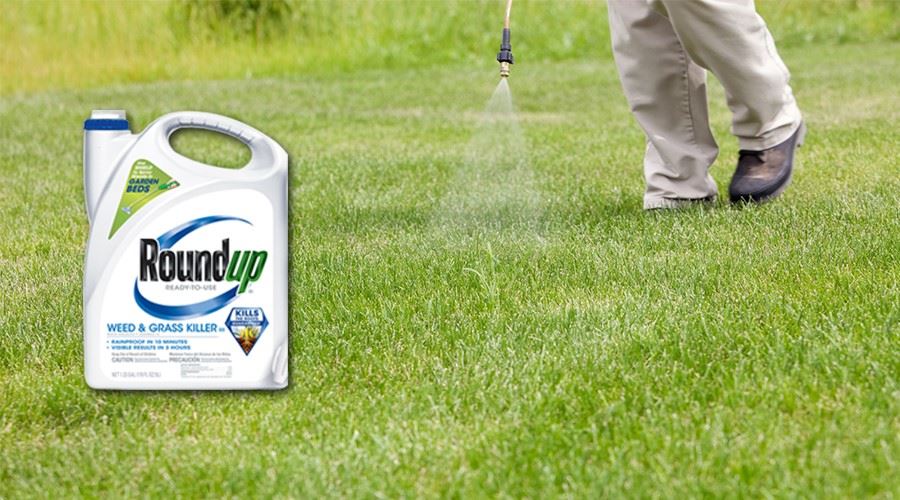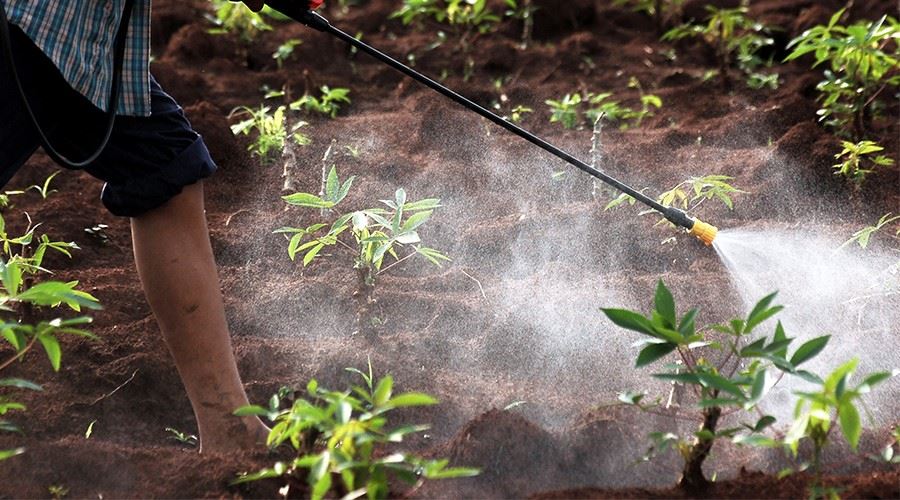
Roundup Class Action Lawsuit
Jury Awards Groundskeeper $289.2 Million in Landmark Monsanto Roundup Verdict
- Monsanto markets Roundup weed killer as safe because its active ingredient, glyphosate, targets an enzyme found only in plants.
- This claim is “false, misleading and deceptive,” according to Roundup cancer attorneys.
- Human microbiota (bacteria, fungi, etc.), mucous membranes and skin depend on the enzyme glyphosate targets.
- Health risks follow when glyphosate disrupts human microbiota.

 On June 20, 2017, six people from California, Florida, Illinois, New Jersey, New York, and Wisconsin filed a class action lawsuit against Monsanto. The class action involves allegations that accuse Monsanto of falsely promoting Roundup products as interfering with an enzyme that is found only in plants, but not “in people or pets,” even though beneficial bacteria in the human gut, mucus membranes and skin depend on the same enzyme that Roundup targets.
On June 20, 2017, six people from California, Florida, Illinois, New Jersey, New York, and Wisconsin filed a class action lawsuit against Monsanto. The class action involves allegations that accuse Monsanto of falsely promoting Roundup products as interfering with an enzyme that is found only in plants, but not “in people or pets,” even though beneficial bacteria in the human gut, mucus membranes and skin depend on the same enzyme that Roundup targets.
Filed in U.S. District Court for the Western District of Wisconsin, the lawsuit names Monsanto Co. of Missouri and Scotts Miracle-Gro Co. of Ohio, which markets and distributes Roundup in several U.S. states. The law firm of Wisner Baum and six other law firms filed the class action on behalf of the plaintiffs and class members.
At the heart of the class action litigation is Monsanto’s claim throughout their marketing that glyphosate, the active ingredient in Roundup, targets an enzyme that is found only in plants. This assertion continues to appear in Monsanto’s video advertisements for their websites and YouTube channel.
However, according to the class action lawsuit, Monsanto’s claim that glyphosate targets an enzyme found only in plants is “false, misleading, and deceptive, as the enzyme that glyphosate targets is found in people and pets—specifically, in beneficial gut bacteria critical to their health and well-being, including their immune system, digestion, allergies, metabolism, and even their brain function.” What is Glyphosate and How Does it Harm People? Monsanto introduced glyphosate herbicide in 1974 as a broad spectrum herbicide and crop desiccant. Since its introduction, glyphosate has grown into one of the most widely used agricultural products in the world, accounting for roughly 25 percent of the global herbicide market. A 2016 study found that approximately two-thirds of the total volume of glyphosate used in the U.S. between 1974 and 2014 was sprayed in just the last ten years.
Glyphosate Targets an Enzyme That is Vitally Important for the Gut
“Health risks follow when glyphosate disrupts the microbiota cells that regulate numerous biological processes such as the immune system and digestion.” – R. Brent Wisner, Roundup Cancer Attorney
It is undisputed that glyphosate kills weeds by interfering with the “shikimate pathway,” a metabolic sequence that synthesizes vital amino acids. Glyphosate interferes with 5-enolpyruvylshikimate-3-phosphate (EPSP), disrupting the fifth of six enzymatic steps in the shikimate pathway, which processes aromatic amino acids. Inhibiting the shikimate pathway causes an aromatic amino acid deficiency, which eventually causes plants to die by starvation.
Beneficial bacteria in the human gut (and the guts of other mammals), on which our immune systems rely, produce and utilize EPSP. A 2013 study conducted by Awad A. Shehata found that: “A reduction of beneficial bacteria in the gastrointestinal tract microbiota by ingestion of glyphosate could disturb the normal gut bacterial community.”
Another study from 2014 entitled ‘Rheumatic Diseases and the Microbiome’ reported the following:
“[o]ver the first several years of life each of us establishes a community of microorganisms that are commensal and inhabit niches on skin and mucous membranes. These microorganisms are collectively known as the microbiome, or microbiota, and are predominately obtained from one’s mother…gut-associated organisms are critical to the development and activation of the immune system, especially with regard to cell types intimately associated with autoimmunity.”– Scofiled R.H.,Rheumatic Diseases and the Microbiome. International Journal of Rheumatic Diseases 2014; 17: 489–492
What is the Difference Between an Individual Monsanto Roundup Lawsuit and the Roundup Class Action?

 The class action litigation against Monsanto is markedly different than the individual lawsuits Monsanto faces throughout the country. The individual lawsuits seek remedy for personal injuries (non-Hodgkin lymphoma) sustained as a result of exposure to Roundup. These lawsuits are filed by farmers, farm workers, horticulturalists, landscapers, gardeners, government employees, and a host of other people who were diagnosed with non-Hodgkin lymphoma after exposure to Roundup. These individuals allege Monsanto knew about the link between exposure to Roundup and non-Hodgkin lymphoma, but failed to warn consumers.
The class action litigation against Monsanto is markedly different than the individual lawsuits Monsanto faces throughout the country. The individual lawsuits seek remedy for personal injuries (non-Hodgkin lymphoma) sustained as a result of exposure to Roundup. These lawsuits are filed by farmers, farm workers, horticulturalists, landscapers, gardeners, government employees, and a host of other people who were diagnosed with non-Hodgkin lymphoma after exposure to Roundup. These individuals allege Monsanto knew about the link between exposure to Roundup and non-Hodgkin lymphoma, but failed to warn consumers.
Monsanto faces individual lawsuits in the following courts:
- Federal Litigation: MDL 2741, (Multidistrict Litigation), U.S. District Court, Northern District of California, San Francisco.
- California State Litigation: Case No. RG17853420, State of California Superior Court, County of Alameda.
- St. Louis Circuit Court Litigation: Case No 1722-CC00796, Case No. 1722-CC00796 and Case No. 1722-CC00799, City of St. Louis Circuit Court for the 22nd Circuit, St. Louis, Missouri.
The Monsanto Roundup class action, on the other hand, involves consumers who allege Monsanto engaged in violations of trade and business practice laws. The class representatives say they would never have purchased Roundup products had they known that glyphosate targets an enzyme that exists in the human body and the bodies of certain mammals, contrary to Monsanto’s marketing.
The class action accuses Monsanto of unjustly enriching themselves as a result of class members purchasing more Roundup products and paying more for Roundup products than they would have otherwise in absence of the alleged false marketing claims.
It is undisputed that glyphosate kills weeds by interfering with the “shikimate pathway,” a metabolic sequence that synthesizes vital amino acids. Glyphosate interferes with 5-enolpyruvylshikimate-3-phosphate (EPSP), disrupting the fifth of six enzymatic steps in the shikimate pathway, which processes aromatic amino acids. Inhibiting the shikimate pathway causes an aromatic amino acid deficiency, which eventually causes plants to die by starvation.
Beneficial bacteria in the human gut (and the guts of other mammals), on which our immune systems rely, produce and utilize EPSP. A 2013 study conducted by Awad A. Shehata found that: “A reduction of beneficial bacteria in the gastrointestinal tract microbiota by ingestion of glyphosate could disturb the normal gut bacterial community.”
Another study from 2014 entitled ‘Rheumatic Diseases and the Microbiome’ reported the following:
“[o]ver the first several years of life each of us establishes a community of microorganisms that are commensal and inhabit niches on skin and mucous membranes. These microorganisms are collectively known as the microbiome, or microbiota, and are predominately obtained from one’s mother…gut-associated organisms are critical to the development and activation of the immune system, especially with regard to cell types intimately associated with autoimmunity.”– Scofiled R.H.,Rheumatic Diseases and the Microbiome. International Journal of Rheumatic Diseases 2014; 17: 489–492
Our Case Results

-
$2.0 Billion Verdict Personal Injury
In May of 2019, the jury in the case of Pilliod et al. v, Monsanto Company ordered the agrochemical giant to pay $2.055 billion in damages to the plaintiffs, Alva and Alberta Pilliod, a Bay Area couple in their 70s.
-
$289.2 Million Verdict Personal Injury
On Aug. 10, 2018, a San Francisco jury ordered Monsanto to pay $39.25 million in compensatory damages and $250 million in punitive damages to Mr. Johnson, a former groundskeeper who alleged exposure to Monsanto’s herbicides caused him to develop terminal non-Hodgkin lymphoma.
-
$265 Million Settlement Fatal Train Crash
In 2016, Wisner Baum attorney Timothy A. Loranger and six other attorneys in the Plaintiffs’ Management Committee were able to secure a $265 million settlement for victims of the 2015 Amtrak 188 derailment in Philadelphia, one of the largest in the U.S. for 2016.
-
$105 Million Settlement Pharmaceutical Settlement
Wisner Baum obtained $105 million on behalf of multiple clients involved in a pharmaceutical negligence case.
-
$80 Million Verdict Personal Injury
Wisner Baum attorneys served on the trial team in the case of Hardeman v. Monsanto Company, which resulted in an $80 million jury verdict for the plaintiff, Edwin Hardeman.
-
$63 Million Settlement Paxil Pediatric Class Action
$63 million pediatric class action re false promotion of Paxil. Judge approves final terms of improved national pediatric paxil class action settlement – consumers get a better deal.

Client-Focused Representation
REVIEWS & TESTIMONIALS
We believe our track record speaks for itself. But you don’t have to take our word for it. See what our clients have to say about working with us.
-
"I Can’t Imagine a Better Law Firm"
Multiple lawyers recommended Wisner Baum to me and I have been consistently impressed with the quality of their work.
- Best Law Firms Survey -
"They Are About Changing the Systems..."
Wisner Baum are not only amazing attorneys but more importantly, they are activists. They are about changing the systems which got us into trouble in the first place. They understand their role in the process of making change.
- Kim Witczak -
"Top Legal Minds in the Country"
The Wisner Baum firm has some of the top legal minds in the country; they are driven, determined, trustworthy, ethical and passionate.
- From Best Lawyers® Best Law Firms





.2110081511550.png)